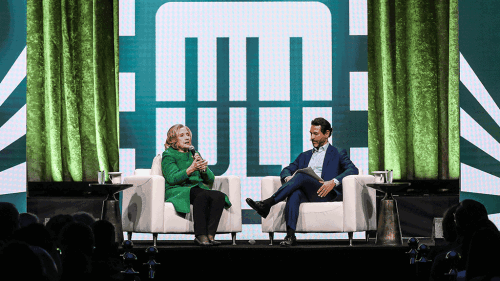With the tenth anniversary of 9/11 upon us, our thoughts are with those who lost family members and friends in the terrorist attacks. A decade later, the sense of loss remains deep, and the memory is still vivid for the nation as a whole. The tragedy left Americans feeling violated, vulnerable, and uncertain about cities as safe places in which to live and work. However, what we learned in the days, months, and years afterward is that it’s far easier to tear down buildings than to wear down resolve. We learned that what makes people want to be in cities is strong enough to withstand the most vicious attempts to drive them away.
As ULI’s 2011 Fall Meeting and Urban Land Expo draws closer, I am reminded of the Institute’s 2001 Fall Meeting, which was scheduled for Boston during the first week of October that year. Following 9/11, the decision was made to go ahead with the program, offering ULI members an opportunity to be together and contemplate a world in which the future of urban areas suddenly seemed in jeopardy.
In an all-member statement confirming that the meeting was still set, then–ULI Chairman Joe O’Connor said, “At this point, all of us have lots of questions and few answers. Our lives have changed. But our commitment to excellence in urban design, to promoting development that fosters the highest quality of life in our communities, remains the same . . . . Come join us as we focus on rebuilding, restoring, and reinforcing faith in urban America.”
Nearly 4,000 ULI members came to a meeting quickly reprogrammed to address possible outcomes, including the implications for urban design, in terms of the role of downtowns; the possible impact on employment centers, including trophy buildings and signature properties; and any effect on the movement back to downtowns.
The 2001 Fall Meeting was memorable for many reasons. The highlight, however, was the inspiration we received from the late U.S. Senator Daniel Patrick Moynihan, who was being honored as the 2001 recipient of the ULI J.C. Nichols Prize for Visionaries in Urban Development. Ever thoughtful and matter-of-fact, he advised us not to dwell on the tragedy, but to keep making our cities better. “The only way they [terrorists] can win is to change the way we live, and a lot of us live in cities,” he said. Read the transcript of Moynihan’s remarks.
Did 9/11 change the way we live? Of course it did. It permanently changed air travel, for example; it also affected access to and the siting, design, construction, and management of offices and public buildings. This is particularly evident in the case of federal properties, where a security-first approach to location and construction—while understandable—has nevertheless left us with more than a few fortresslike buildings that are ill-suited and poorly connected to their surroundings. The lesson learned is this: Successful urban development is not about making individual buildings safe. It’s about making whole urban environments both safe and appealing.
However, the bigger lesson regarding the impact of 9/11 on the built environment has more to do with what did not change than what did. What did not change is this: people’s desire to live in urban areas that offer a high quality of life with ample choices for housing, jobs, transportation, education, and recreation—places that offer variety, spontaneity, and delight.
The attacks did not scare people away from cities. They did not scare them away from living and working in towers and trophy buildings, and they did not scare them away from gathering in parks and plazas. In most big cities throughout the United States, the downtown migration by young professionals and empty nesters that began during the 1990s kept going, with development accommodating the movement stymied only by the Great Recession. Even as cities continue to struggle in a faltering economy, the revival has held: many downtowns and centrally located neighborhoods have been transformed into vibrant places, with well-designed and accessible open space serving as both a respite and a key economic driver. A case in point is Battery Park City, a community next to Ground Zero that is alive with families, new retail uses, and a thriving waterfront park.
With people changing jobs and residences much more frequently over the past ten years, our society has become more mobile. The choices people are making about their living and working environments reflect a variety of economic, environmental, demographic, technological, and lifestyle factors that far outweigh fears of terrorism.
Going forward, the most resilient cities will be those that best respond to the changing needs and preferences of urban residents. This means what it has always meant: encouraging innovative new development, preserving the best of the past, creating a great public realm, and accommodating lots of different kinds of people.




